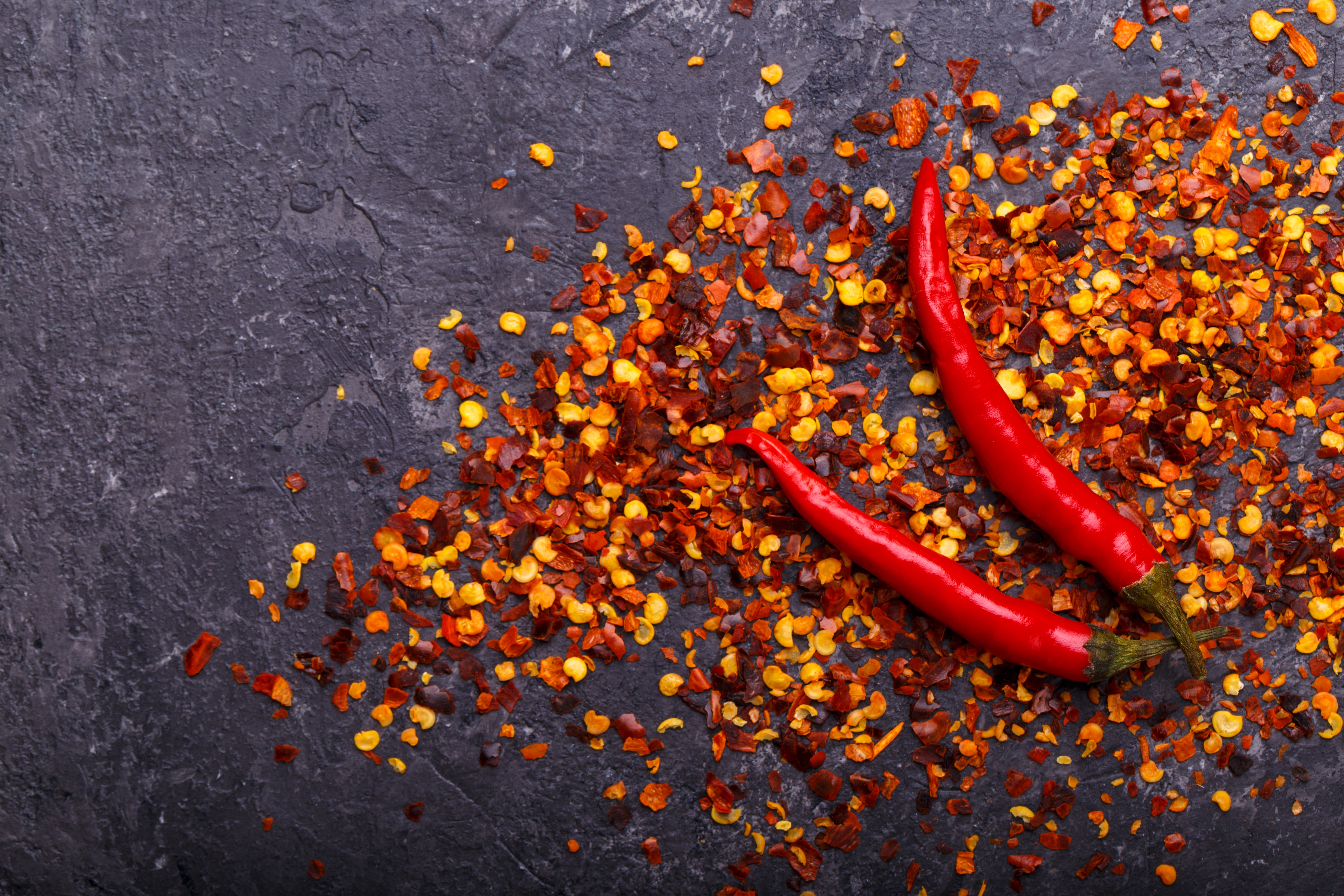Decisions, decisions.


In the vibrant palette of culinary spices, the color red takes a prominent spot—embodying both the allure and the promise of heat that can kick the flavor of any dish up a notch. Although these spices share a common color, their origins, taste profiles and uses in cooking are distinct, making each one an indispensable ingredient in its own right.
Discover what sets chili powder, red pepper flakes and paprika apart; get insights into their culinary versatility and how they can be used to elevate your cooking and learn about common red pepper varieties used in your favorite spices.
Hungry for more? From sea salt and peppercorns to Everything Seasoning that you’ll want to put on, well, everything, our collection of spices & seasonings has everything you need to create your next delicious meal.
Chili powder is a blend that typically consists of ground dried chili peppers, cumin, garlic powder and oregano, among other spices (depending on the recipe or brand). Common in Southwestern cuisine, chili powder offers a complex flavor profile that goes beyond mere heat. It can add depth to dishes, making it a staple in Tex-Mex recipes like chili con carne, tacos and enchiladas.
FAQ: Is chili powder the same as ground chili pepper?
Answer: No, chili powder and ground chili pepper are not the same. Ground chili pepper is made by grinding dried chili peppers into a powder form without any additional spices or ingredients. It offers the pure, concentrated flavor and heat of the specific type of chili pepper used. Chili powder, on the other hand, is a blend of ground chili pepper and other spices.
Red pepper flakes, also known as crushed red pepper, are made from dried and crushed whole red chili peppers—including the seeds, which contribute to its heat. This spice is renowned for its ability to deliver a consistent, fiery flavor with a slightly fruity undertone, making it a favorite for sprinkling over pizza, pasta dishes, and stir-fries. Red pepper flakes are versatile and can be used in cooking or as a garnish to add a bit of spice to any dish.
FAQ: Is crushed red pepper the same as chili flakes? And are chili flakes the same as red pepper flakes?
Answer: Yes, the terms “crushed red pepper,” “chili flakes” and “red pepper flakes” are often used to describe the same product: dried and crushed red chili peppers, including both the flesh and the seeds. These spices are used interchangeably.
The differences, if any, are typically minor and often come down to regional preferences in terminology or slight variations in the type of chili pepper used, the coarseness of the grind or the inclusion of other spices in the mix. For most culinary purposes, these terms can be used interchangeably without significantly affecting the flavor or outcome of the dish.
Paprika is made from ground dried red peppers, ranging from sweet bell peppers to hotter varieties. Originating from Hungary and Spain, paprika comes in several varieties, including sweet, smoked and hot, each delivering a different level of heat and complexity.
FAQ: Can I use paprika instead of crushed red pepper, or vice versa, and what impact does it have on a dish?
Answer: No, they’re not directly interchangeable. When comparing paprika to crushed red pepper, it’s important to know that these two spices differ significantly in flavor and heat. Paprika, often made from sweeter peppers, provides color and a mild taste without much heat. Crushed red pepper, made from hotter peppers and seeds, offers a spicy kick. Substituting one for the other can change your dish’s flavor and spice level significantly, as paprika is milder and more about flavor, while crushed red pepper is all about adding heat.
The world of red peppers is as vibrant and diverse as their hues, which range from the deepest reds to the fieriest oranges. These peppers not only add a pop of color to our plates but also bring a spectrum of flavors and heat levels, each with its unique culinary role. Common red pepper varieties include:
Sometimes you may find yourself missing a key spice in the middle of cooking. Don’t worry—there are several clever substitutions for common red pepper spices that can save your dish without sacrificing flavor. Remember, though, that when substituting spices, it’s good to start with a conservative amount and adjust to taste.
The goal is to achieve a balance that complements your dish without overwhelming it. Each substitute brings its own unique flavor and heat level, offering an opportunity to customize and experiment in your culinary creations.
Chili powder blends spice, warmth and complexity into dishes. In its absence:
For dishes needing that punch of heat from red pepper flakes:
Paprika is known for its sweet to mildly hot flavor and vibrant color, making it a staple in many dishes. If you’re out of paprika:
Hungry for more? From sea salt and peppercorns to Everything Seasoning that you’ll want to put on, well, everything, our collection of spices & seasonings has everything you need to create your next delicious meal.
JOIN THE CONVERSATION